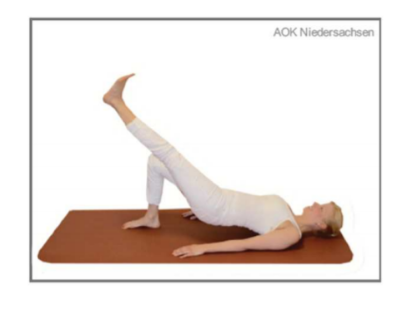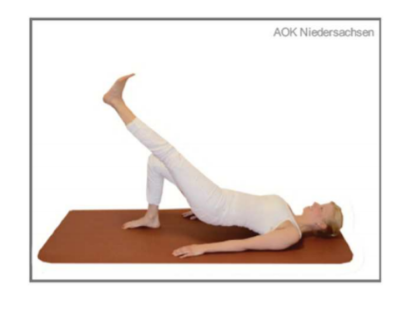3 Tips For Malaysians Who Work From Home (WFH): Ergonomics and Exercises Checklist
- 24 ANGELS HOMECARE
- Aug 9, 2021
- 6 min read
Updated: Aug 24, 2021
At the end of the year 2019, an outbreak of COVID-19 occurred. Thousands of people around the world started self-isolation due to the coronavirus pandemic. Work from home gradually became a "new normal" social situation around the world. According to Job Street, 67% of Malaysian companies required their staff to work from home. Working from home have made people start to engage more in screen time than ever before and people also started to transform their kitchen tables, kitchen chair and bedrooms into a temporary home office.
Do you think that these home offices is ergonomically suitable for workers to spend the whole day working? Do you think that these non-ergonomic home officers will lead to the onset of discomfort in the body such as neck and low back pain? Do you think that this discomfort in the body will lead to more health problems in the future? Here are the ergonomics and exercise checklists that can be done at home.
1. Ergonomics Basics in Working or at Home

Chair

Adjustable Chair
- feet are able to rest flat on the floor
- thighs are parallel to the floor
- feet should not be dangling when sitting
- shoe box or a small stool can be used to rest the feet on it
- this can reduce the stress on the lumbar spine
Adjustable Armrest
- ensure the arms can gently rest on the armrest with the shoulders in a relaxed position
Lumbar and Back Support
- pillow or a rolled-up towel can be placed behind the back
- avoid the need to lean away from the back of the chair and cause faulty posture due to the non-ergonomic problem
Table

Adjustable Table
- a sturdy board or blocks can be placed under the table legs if the table is too low or adjust the height of the chair if the table is too high
Surface of Table
- using pipe insulation placed along the edge of the table to reduce the contact stress due to the hard edge
- a wrist pad or folded towel can also be used so that hands can be relaxed while using the tablet and keyboard to work for a prolonged period of time
Monitors

Height of monitor
- placed directly in front of and about an arm's length away
- the top of the screen should be eye levelled when looking straight ahead
Dual/multiple monitors
- keep the primary monitor directly in front and place the secondary monitors to the side of the primary monitor.
Laptop
- place the laptop on a stand to meet the eye level and an external keyboard and mouse is suggested
Keyboard & Mouse

Position of mouse and keyboard
- mouse should be placed within easy reach and on the same surface as the keyboard
- elbow should at 90 degrees with the wrist straight
- keyboard should be at the same height with the elbows
- keyboard and mouse should be close enough to prevent excessively reaching as it might increase pressure over the shoulders and arms, which may cause strains
20-20-20 Rule

Workers should look at something 20 feet away for 20 seconds after every 20 minutes of work.
Regular screen breaks are very important as they can help workers to release their stress and recover from work-related consequences of strain after high work demands.
Helps to adjust the unconsciousness faulty posture due to the non-ergonomic workplace set-up.
2. Neck Exercises
Below are the simple neck exercises that can be performed at home after working to reduce neck pain and release the tension among neck muscles due to high work demands.
Neck Flexion Stretching Exercise

Step 1: You need to be in standing positions
Step 2: Gradually lower the chin toward the chest and look downward.
Step 3: Subjects should feel a gentle stretch over the back muscles of the neck.
Step 4: You also can place both hands over the head and apply some downward pressure to enhance the stretching.
Step 5: Hold for 5 seconds and slowly return to the starting position.
Step 6: Repeat 5 times.
Neck Extension Stretching Exercise

Step 1: You need to be in a standing position.
Step 2: Gently extend the neck by looking upward.
Step 3: You need to make sure only to bring the head backwards while keeping the shoulders and back stationary to avoid the backward fall.
Step 4: The position of hands can place over the waist area.
Step 5: Hold 5 seconds after feeling a gentle stretch.
Step 6: Slowly returning the head to starting position
Step 7: Repeat it 5 times
Neck Side Flexion Stretching Exercise

Step 1: You need to be in a standing position.
Step 2: Slowly bend the head to one side with the help of your hands. For example, bending your head to the left ear by bringing the left ear toward the left shoulder.
Step 3: You should feel a gentle stretch over the right neck muscles.
Step 4: Hold for 5 seconds and slowly return back to starting positions.
Step 5: While stretching, you need to make sure that your shoulders and back remain upright.
Step 6: Repeat 5 times for each side.
Neck Rotation Stretching Exercise

Step 1: You need to be in a standing position
Step 2: Gradually turn the head to the left as far as it can while maintaining the back and shoulders upright
Step 3: You can use your hands to apply some pressure to increase the stretching
Step 4: Hold 5 seconds when feeling a gentle stretch
Step 5: Slowly bring the head back to the starting position
Step 6: Repeat 5 times for each side
3. Back Exercises
Back pain is also one of the serious musculoskeletal disorders among work from home workers. Hence, below are the simple back extension that can be performed at home. These exercises are recommended by Haufe et al. (2017) as these exercises have been proven effective in reducing low back pain. He recommended that these exercises should be conducted for 20 minutes and 3 times/week. He also mentioned that these exercises can be performed at home or at work during the regular screen breaks time.
Bridging

Step 1: You are required to lie on the back with arms by the side of the body
Step 2: Bend both knees with feet flat on the floor.
Step 3: Raise the hips to create a straight line from knees to chest
Step 4: Hold for 2-3 seconds
Step 5: Slowly lower the back of the ground
Step 6: Repeat 10-12 repetitions, total 2 sets
Single Leg Bridging
Step 1: You are required to lie on the back with arms by the side of the body
Step 2: Bend both knees with feet flat on the floor
Step 3: Raise the hips to create a straight line from knees to chest
Step 4: After leading the hips, you are required to slowly extend one leg and then slowly place the foot back
Step 5: Extending the other leg and placing it back
Step 6: Slowly lower the hips to the ground
Step 7: Repeat 8-10 repetitions, 2 sets
Step 8: You are reminded to breathe slowly and regularly while performing the exercise
Quadruped Arm/Leg Raise

Step 1: You are required to be in a quadruped position, as in the picture shown
Step 2: Lift one arm to the horizontal position
Step 3: Hold the position for 2 seconds while making sure to always keep the back straight
Step 4: Slowly extend the diagonal leg while maintaining the diagonal arm and briefly hold this position
Step 5: Hold for 5 seconds
Step 6: Slowly lower the arm and leg
Step 7: For repetition, you can change the leg and arm
Step 8: Repeated for 8-10 repetitions with both sides, 3 sets
Back Extension Exercise 1

Step 1: You are required to lie on the tummy as shown in the picture
Step 2: Bend the elbows and lay the hands behind the neck
Step 3: Hold this position for up to 5-8 seconds
Step 4: Slowly lower the elbows and arms back to the ground
Step 5: Repeat for 6-8 repetitions, 2 sets
Back Extension Exercise 2

Step 1: Start position same as Back Extension Exercise 1
Step 2: Bend the elbows to approximately 90 degrees
Step 3: Lift the arms and bring the shoulders blades towards the spine
Step 4: Hold this position for about 5-8 seconds
Step 5: Repeat for 6-8 repetitions
Back Extension Exercise 3

Step 1: Start position same as Back Extension Exercise 1
Step 2: Keep both arms straight over the head at a horizontal position which same as the picture shown.
Step 3: Lift the arms and back up (No need too high to prevent back muscles strain)
Step 4: Hold this position for 5-8 seconds
Step 5: Repeat for 6-8 repetitions
Conclusion
In conclusion, it is really important to create and design an ergonomic working environment to prevent the occurrence of musculoskeletal disorders such as NP and LBP as they can lead to more serious health conditions. Besides that, having an ergonomic working environment can also increase the productivity and performance of workers as it enables n optimal working environment. Other than the ergonomic working environment, it is also important to have an active lifestyle. Workers are recommended to perform simple exercises at home to release muscles tension while strengthening the muscles. Without hesitation, let us carry out these suggestions to make us better!








